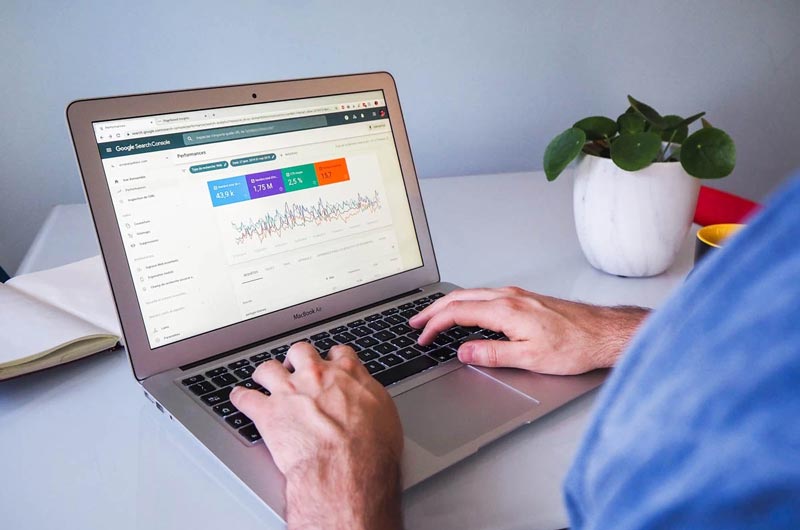Do you have a website for your business? If the answer is yes (and it should be yes), then you should be using Google Analytics. If you want to gain a better understanding of your website, improve your search engine placement or SEO, using Google Analytics can help you by providing insight into who is visiting your site and what they do when they come to your site. From a marketing standpoint, Google Analytics can show you the effects of your marketing campaigns and how your site’s user experience impacts certain factors such as conversion. If you are currently using Google Analytics, that’s great! But, are you using it effectively? is the question you should be asking yourself. It can be overwhelming with all the different charts and tabs to really grasp what you should be looking at, but that’s why we’re here to break it down for you.
The top 10 key metrics you should track in Google Analytics
1. Users and sessions:
The number of user metric shows the number of unique individuals visiting your website over a specific period of time. Sessions are the number of times users are actively engaged with your site. These metrics provide a quick-view of your marketing efforts and how your campaigns drive traffic to your website.
2. Average session duration:
This metric shows the amount of time a user engages with your website for a single session. This metric will give you a better idea of how long people are engaged with the content on your site.
3. Average pages per session:
Tying in with the last point, this metric shows how many pages a user views on your site in a single session. It’s good to measure this metric with average session duration to get a better idea of what content users find helpful on your website.
4. Bounce rate:
The bounce rate metric is an important number to keep track of. It is the percentage of users who visit only one page on your website before leaving. If your website has a high bounce rate, there could be an issue on your website affecting your user’s experience. As an example, the page could be loading too slowly for your users because the images on that page are too large, therefore causing people to give up on loading your site.
5. Organic vs. Paid sessions:
Organic Search traffic is traffic from people who found and visited your website based on organic, non-paid search engine results. Paid Search traffic is from the people who found and visited your website based on a paid advertisement. Both of these metrics are important, but you particularly want to keep your eye on the organic search results for your website. The Organic Search metric gives you a better overview of the effectiveness of your SEO strategies. It’s also essential for the long-term sustainability of your website.
6. Google Ads:
If you use Google Ads, this metric provides you with detailed information about the success of your campaigns. You can get this metric in your analytics reports by linking your Google Ads account to your Google Analytics account.
7. Average time on page:
As the name suggests, this metric calculates the average time a user spends on a page on your website. This metric can provide you with helpful information about your website’s SEO, how well your marketing campaigns are targeting relevant customers, and how good your site’s user experience is.
8. Top ten landing pages:
The top ten landing pages on your website are the pages that receive the most traffic. In other words, they are the pages that users find the most helpful when they come to your website. These top ten pages are where you want to work to improve your conversion rates.
9. Top queries in search:
Another great feature from Google Analytics is you can see what people are searching to find your website. This can provide you with insight as to what type of content your audience wants to find on your website as well as search terms or keywords that lead to higher engagement on your site that you should work into other verbiage in your marketing or advertising to increase your conversion rates.
10. Goal conversion rate:
Every website has a goal in mind for its visitors. If your business sells products online, it would be to get customers to hit the ‘Checkout’ button. If you write a blog, your goal may be to get more people to sign up for your weekly newsletter. Whatever your goal may be, you can keep track of your conversion through Google Analytics. This can again provide you with better insight into the success of your marketing campaigns.
Are you still having trouble translating information from your Google Analytics reports and how it pertains to your marketing or advertising campaigns? Not seeing the success you want from your current campaigns? We can help at 3SIXTY Marketing Solutions. From helping you improve your SEO to running your social media and digital advertisement campaigns with a unified strategy, we’ve got you covered – 3SIXTY! If you have any questions or you’re ready to take your digital marketing strategies to the next level, give us a call at (705) 252-4180. All you have to do is pick up the phone, and we can handle the rest.




